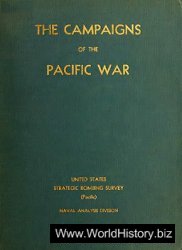The basis of feudal service under the Ottomans was the timar, a non-hereditary grant of land, comparable to the old Seljuk iqta, which may have been introduced as early as the reign of Osman and certainly before the mid-14th century. This varied somewhat in size, its value in annual revenue ranging from as little as 750 aspers (akjes) right up to 20,000, a fief in excess of this value being called a ziamet.1 The holder of such a fief, called respectively a timariot or ziam (more correctly za’im, meaning ‘chief or ‘leader’), was entitled to all or part of the taxes levied on his fief, as well as a fifth to a third of the fiefs yield. In exchange for this he performed mounted military service, which was calculated on the basis of the timar being worth 1,500-3,000 aspers in Anatolia or 6,000 in Rumelia (i. e., the European part of the Ottoman state); for a timar of this value, service was required from the timariot himself plus a similarly armed horseman comparable to the European esquire and called a cebeli (a name derived from the Turkish cebe, in turn from Mongol gebe, meaning a mail corselet), and a less well-equipped slave horseman or groom called a gulam, oghlan or kuL For each additional 3,000f aspers (or 4,000 in the case of a subashi and 5,000 in the case of a ziam or sancakbey, for which see below) one extra cebeli was required, and on this basis it was reckoned that a large fief could field as many as 15 men. Some timariots, however, provided up to 50 more cebelu than required since, as in feudal Europe, the size of his retinue to a certain extent depended on, or even established, the timariot’s personal standing, annual monetary awards sometimes being granted by the sultan in exchange for the appropriate additional military service. Where the value of the timar did not fit neatly into the established scale of 3-5,000 asper units, the service of a gulam, oghlan or kul was required for the outstanding fraction. The oldest surviving timar defter (register), dating to 1431, says that the smallest fiefs, those of just 750-2,000 aspers, were held by cebelu rather than timariots, those between 1,500-2000 aspers being required to field in addition a gulam or oghlan. The most common term in use in modern sources for all Ottoman feudal cavalry, regardless of rank, is sipahi, another word of Persian origin. This derives from timar sipahiler, one of the assorted alternative names for the timariot that are to be found in the sources (which include in addition timar sahibi, timar erleri and ehl-i timar). Failure to perform their requisite military obligations resulted in the temporary or permanent confiscation of all or part of a timariot’s fief. Nevertheless, one western source records towards the end of the 15th century that ‘the sipahis are assembled only with difficulty and are poorly-armed. Some carry a lance, but others only a sword and a bow’.
On campaign the sipahis were organised on a decimal basis, the largest unit being of 1,000 men under an alay bey (‘muster leader’, sometimes called a binbashi). Elected by the sipahis from amongst themselves, this was the highest rank a provincial sipahi could attain. He was responsible initially for mustering the unit (hence his title), and he was normally assisted by two lieutenants, the beyrak-dar (standard-bearer) and the cavus (sergeant-at-arms — see page 10). Since in practice each sancak, or province, of the Empire seems to have fielded between 1,000 and about 3,000 sipahis during this period, its governor, called a sancak bey, must have customarily been accompanied by between one and three such alay beyi on campaign. In addition to leading the sipahis of his sancak in wartime plus a retinue of at least 20 sipahis of his own, the sancak bey also co-ordinated the collection of taxes and performed other non-military administrative duties. He appointed police chiefs (subashis) in each major town and city, who in wartime probably commanded several hundred men, or at least 100. Normally, however, a unit of 100 men appears to have been the responsibility of a ceri-bashi (‘troop-leader’), chosen from amongst the ziams of each koda, or sub-district. Officers called ceri-surucus (‘troop-drivers’) may have been responsible for the smallest units, of 10 men, but little is heard of these 10-man troops beyond the fact that when the army was first mustered it was customarily arranged for one man in each 10 to stay behind and administer tax collection during the absence of his comrades. A unit of 50 men may also have existed, as it did among the Janissaries (see below); certainly Michael Kritovoulos (who wrote in 1467) describes an assembly held by Mehmed II at the siege of Constantinople in 1453 in which there are mentioned ‘captains over a thousand, over a hundred and over 50’.
The number and arrangement of the sancaks must have undergone constant change. Chalkokondyles, writing at or soon after the very end of Mehmed II’s reign, reports 40 Anatolian and 36 Rumelian sancaks, while a Venetian writing in 1496 lists 34 in Anatolia and 28 in Rumelia. An Hungarian list of much the same date gives similar figures of 36 Anatolian and 25 Rumelian sancaks, fielding 5,500 timariots and 37,500 cebelu {'loricati') and 4,500 timariots and 22,500 cebelu respectively, or 70,000 sipahis in all. These figures average out at about 1,100 sipahis per Rumelian sancak and 1,200 per Anatolian sancak. The Burgundian traveller Bertrandon de la Brocquifere, who visited Turkey in 1433, probably had the sancak beys in mind when he wrote that the beylerbey’s ‘pensioners’ were each ‘bound to supply him at their own expense, one with 1,000 men, another with 2,000, another with 3,000, and so on with the rest’, which tends to confirm that most sancaks could field some 1-3,000 sipahis, though 15th century lists of the fiefs in various provinces would indicate that some were only able to maintain between 500 and 1,000 at the very most.
Elsewhere Brocquiere says that ‘those to whom [property or lands] have been given are bound to serve him [the sultan] in war, with a certain number of troops at their own expense. It is thus that Greece annually supplies him with 30,000 men. . . and Turkey 10,000, for whom he only finds provisions. Should he want a more considerable army, Greece alone, so I am told, can then furnish him with 120,000 more; but he is obliged to pay for these. The pay is 5 aspers for the infantry and 8 for the cavalry. I have, however, heard that of-these 120,000 there was but half — that is to say, the cavalry — that were properly equipped, and well-armed with tarquais and sword; the rest were composed of men on foot miserably accoutered’. He adds: ‘Other persons, whose testimony I regard as authentic, have since told me that the troops Turkey is obliged to furnish when the sultan wants to form an army amount to 30,000 men, and those from Greece 20,000’. Konstantin Mihailovic, a Serbian who served alongside the Janissaries in 1455-63, reported that Anatolia’s sipahis numbered 60,000 and Rumelia’s 70,000; another source says Anatolia could field 30,000 and Rumelia 80,000, and yet another that 150,000 could be fielded in all.




 World History
World History









